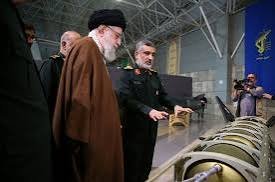The “Fattah” missile marks a significant breakthrough in Iran’s missile technology. Capable of reaching speeds between Mach 13 and 15, over 15 times the speed of sound, the missile can strike targets deep inside ‘Israeli’-occupied territory in just 336 seconds.
Its ability to maneuver mid-flight and jam radar signals makes it particularly dangerous, rendering advanced air defense systems like the Iron Dome and David’s Sling largely ineffective.
With a range of 1,400km, the missile can hit critical targets without being launched from close proximity, minimizing the chances of early detection or interception.
Its unveiling comes at a sensitive moment, as ‘Israeli’ airstrikes intensify against positions linked to Iran’s Revolutionary Guard.
The timing suggests a calculated message to both Tel Aviv and Washington: any large-scale attack on Iran will be met with a response that surpasses the limits of existing defense systems.
The deployment of “Fattah” reflects a deeper transformation in Iran’s military doctrine, one that prioritizes speed, precision, and technological edge over traditional force projection. It signals a transition from conventional attrition warfare to high-tech conflict, raising the stakes in an already volatile region.
Analysts view the missile not only as a tool of deterrence but as a statement of intent: Iran is prepared for a direct confrontation and is showcasing its advanced capabilities at a moment designed to maximize strategic impact.
The introduction of such a weapon dramatically alters the security landscape, introducing a new level of unpredictability to the ongoing confrontation.
According to a statement from the Israel Occupation Forces (IOF), sirens sounded between 5:55 AM and 5:57 AM in accordance with established protocols after a suspicious aerial object crossed into ‘Israeli’ airspace from the east.
Air raid sirens were also activated across large parts of the Upper and Lower Galilee, as ‘Israeli’ authorities expressed concern over a possible infiltration of drones into the area.



